The ocean harbors many fascinating creatures, but few are as distinctive as the hammerhead shark. With their unusual T-shaped heads, these predators have captivated marine biologists and ocean enthusiasts alike. Far from being just a quirky evolutionary oddity, the hammerhead’s cephalofoil (hammer-shaped head) serves as a sophisticated hunting apparatus that gives these sharks significant advantages in their underwater world. This article explores how hammerhead sharks utilize their bizarrely shaped heads as effective hunting tools, examining the various adaptations that make these creatures some of the most successful predators in our oceans.
The Distinctive Anatomy of the Hammerhead

Hammerhead sharks belong to the family Sphyrnidae, which includes nine recognized species ranging from the massive great hammerhead (Sphyrna mokarran) that can reach lengths of 20 feet to the much smaller bonnethead shark (Sphyrna tiburo) at just 5 feet. What unites all species is their characteristic head shape called a cephalofoil, which resembles a flattened hammer or mallet. This head shape varies among species, with some having a more pronounced “hammer” with deeper indentations while others display a more rounded, shovel-like appearance. The width of the cephalofoil can extend up to 50% of the shark’s total body length in some species, creating an unmistakable silhouette in the water. This distinctive feature has evolved specifically to enhance the shark’s hunting capabilities, setting hammerheads apart from their shark relatives.
Enhanced Electroreception: Nature’s Metal Detector
One of the most significant hunting advantages provided by the hammerhead’s unusual cranium is its enhanced electroreception. Like all sharks, hammerheads possess specialized organs called ampullae of Lorenzini—gel-filled pores that can detect the minute electrical fields generated by all living creatures. What makes hammerheads exceptional is the distribution of these electroreceptors. Their wide heads allow for a much greater spread of these sensory organs, essentially creating a living metal detector that can sweep across the ocean floor. Research has shown that hammerheads can detect electrical impulses as faint as half a billionth of a volt. This remarkable sensitivity enables them to locate prey hidden beneath sand or mud, such as stingrays, which are a favorite food source for many hammerhead species. The arrangement of electroreceptors across the wide head allows the shark to triangulate the exact location of buried prey with pinpoint accuracy, giving them a significant hunting advantage over other shark species.
360-Degree Vision: Watching All Angles
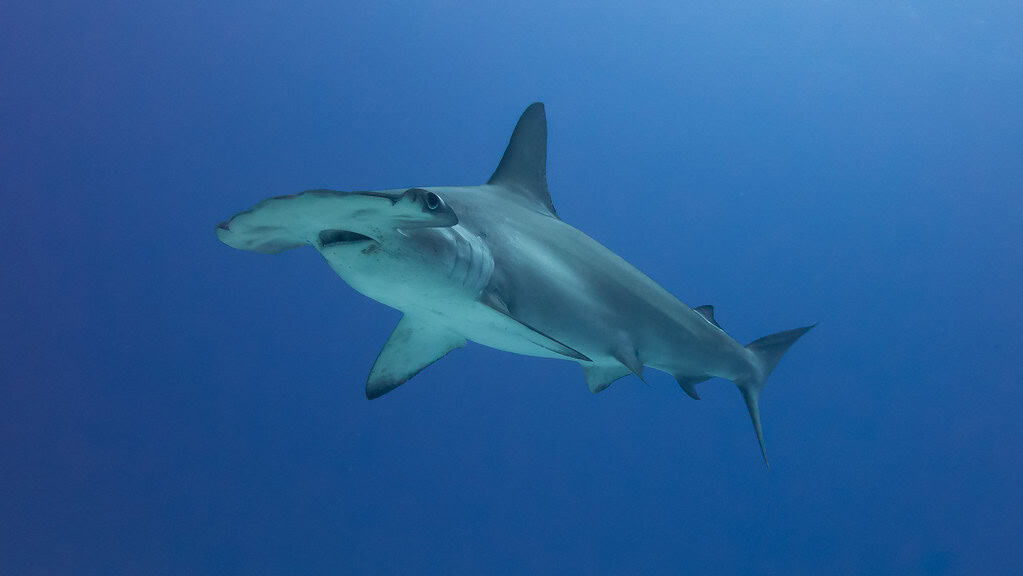
The unusual placement of the hammerhead’s eyes—set at the extreme ends of their cephalofoil—provides them with an exceptional visual field that few other marine predators can match. Unlike most sharks that have a significant blind spot directly in front of their snout, hammerheads enjoy nearly 360-degree vision in the vertical plane. A study published in the Journal of Experimental Biology confirmed that hammerhead sharks have binocular vision in front and can see what’s happening behind them by simply rotating their eyes. This panoramic vision serves multiple hunting purposes: it allows them to spot prey from virtually any angle, helps them avoid potential predators, and gives them a comprehensive awareness of their surroundings. This visual advantage is particularly useful when hunting in open water, where prey can approach from any direction. The enhanced visual field also reduces the need for hammerheads to constantly turn their bodies when scanning for food, making them more energy-efficient hunters.
Hydrodynamic Lift: The Swimming Advantage

The cephalofoil of hammerhead sharks isn’t just a sensory platform—it also functions as a hydrodynamic lift-generating surface, similar to an airplane wing. As water flows over the shark’s head, the shape creates lift forces that help the animal maintain its position in the water column with less effort. This adaptation is particularly valuable for species like the great hammerhead, which frequently hunts for bottom-dwelling prey like stingrays. The hydrodynamic properties allow hammerheads to execute tight, precise turns when pursuing agile prey, giving them maneuverability that belies their size. Researchers from the University of Miami have observed that hammerheads often swim slightly tilted to one side, using their head to generate even more lift and control. This swimming efficiency translates into hunting stamina, allowing hammerheads to cover large territories and pursue prey for extended periods without exhausting themselves—a crucial advantage for an apex predator that must consume significant amounts of food to survive.
The Art of Stingray Hunting
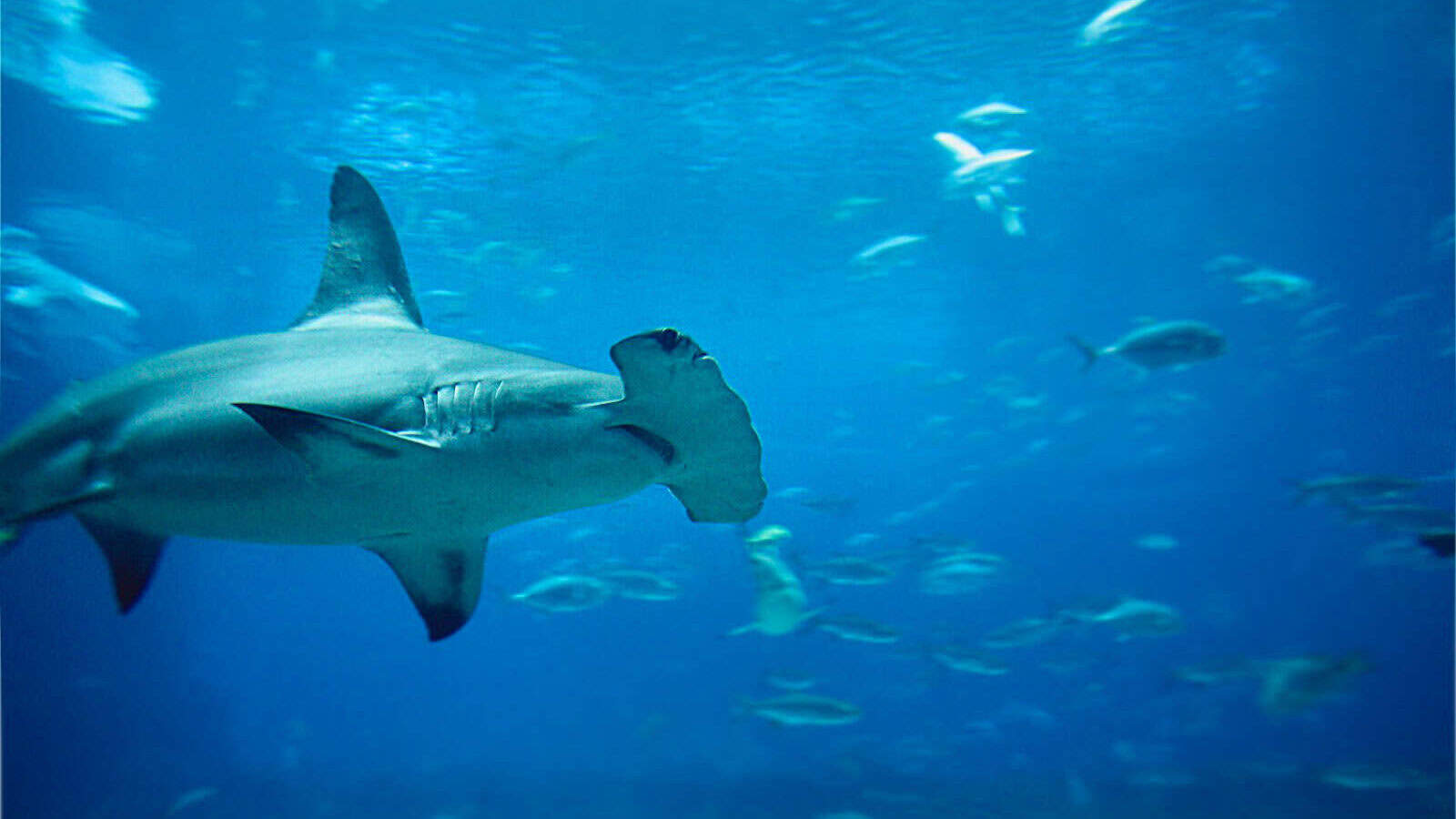
Many hammerhead species, particularly the great hammerhead, have evolved specialized techniques for hunting stingrays—one of their preferred prey items. The wide cephalofoil comes into play as both a detection tool and a restraint mechanism. Using their electroreceptors, hammerheads can locate stingrays buried beneath sandy ocean floors. Once detected, the shark will use its head to pin the stingray against the seabed, immobilizing it while preventing the ray’s venomous barb from striking. Researchers have observed great hammerheads using the edge of their cephalofoil to knock stingrays unconscious before feeding. They’ve also developed a feeding technique where they bite off the stingray’s pectoral fins first to prevent escape, then consume the body. Analysis of stomach contents from great hammerheads has revealed that stingrays can constitute up to 80% of their diet in certain regions, indicating just how specialized and successful their hunting strategy has become. The relationship between hammerhead morphology and stingray predation represents one of nature’s most remarkable examples of evolutionary specialization for hunting.
Amplified Sensory Integration
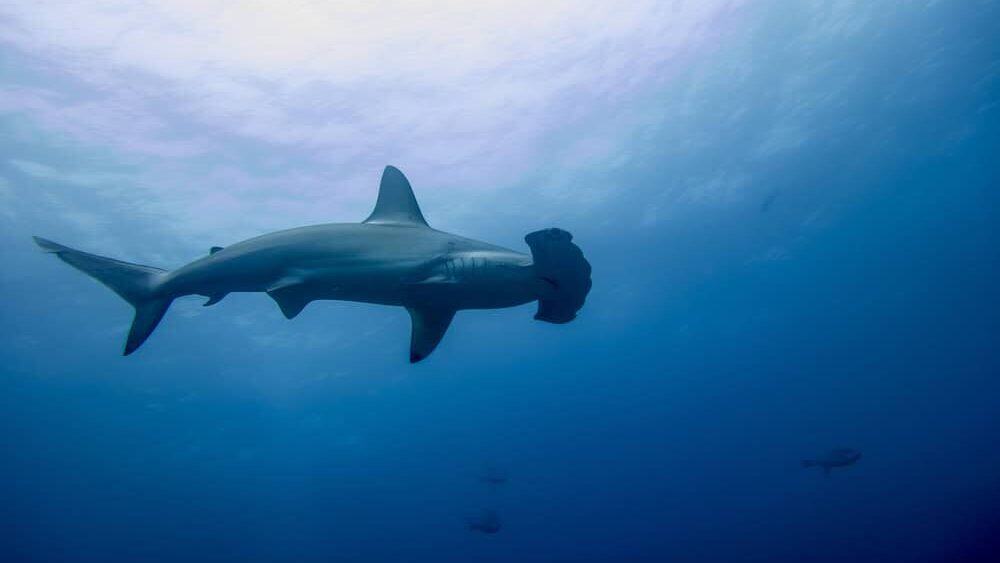
The hammerhead’s unique head structure facilitates exceptional sensory integration—the ability to combine different sensory inputs to create a comprehensive picture of their environment. With their widespread electroreceptors, excellent vision, and sensitive lateral line system (which detects water movement and pressure changes), hammerheads can process multiple streams of sensory information simultaneously. This integration allows them to build a detailed three-dimensional map of their surroundings, tracking prey through various sensory channels. For example, a hammerhead might initially detect a fish through water vibrations via its lateral line, visually confirm the target’s location, and then use its electroreceptors for the final approach and strike. This multi-modal hunting approach makes hammerheads particularly effective in complex environments like coral reefs or murky waters where reliance on a single sense would be limiting. Neuroscience studies suggest that hammerheads have developed specialized brain regions to process this wealth of sensory data, demonstrating how their entire nervous system has evolved to support their unique hunting strategy.
Improved Olfactory Tracking
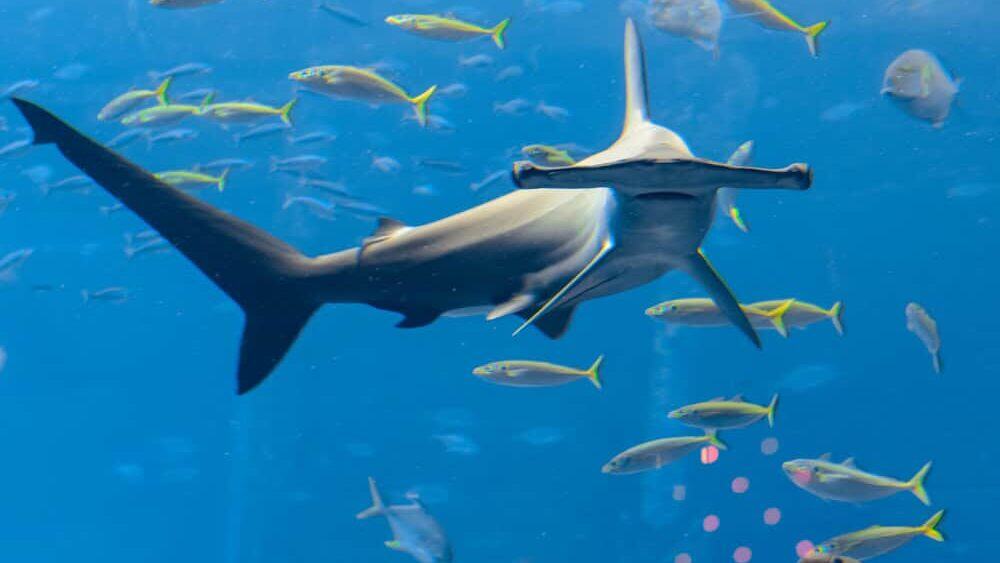
The hammerhead’s wide head provides another key hunting advantage through enhanced olfactory capabilities. Their nostrils, positioned at the far edges of the cephalofoil, can sample a much wider area of water than sharks with conventional head shapes. This wider “smell spacing” gives hammerheads the ability to determine the direction of a scent more accurately through what scientists call “stereo olfaction”—similar to how human ears pinpoint sound sources. By comparing the concentration of odor molecules reaching each nostril, hammerheads can track the gradient directly to the source. A study published in Current Biology demonstrated that hammerhead sharks can detect a drop of blood diluted in an Olympic-sized swimming pool and follow the concentration to its origin. This remarkable olfactory ability makes them exceptional trackers, capable of following scent trails over long distances. When hunting, this allows hammerheads to locate prey from great distances, following injured fish or other food sources by their scent alone, even in dark or turbid waters where visual hunting would be impossible.
Ambush Tactics and Head Use
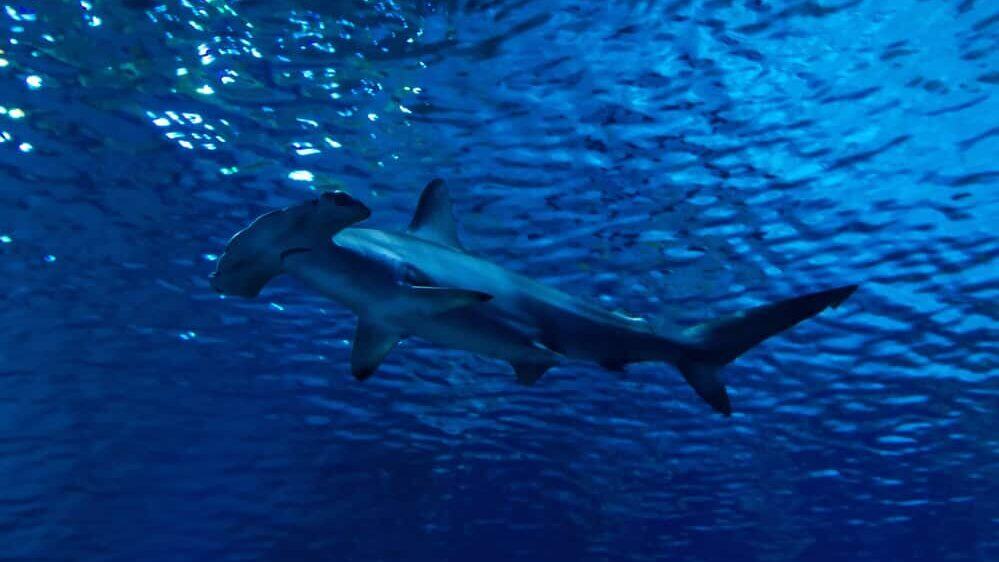
Hammerhead sharks employ sophisticated ambush tactics that leverage their unique head shape. When hunting in reef environments or along drop-offs, they often use their broad heads to corner prey against physical structures, effectively eliminating escape routes. The scalloped hammerhead (Sphyrna lewini) is particularly known for using its head as a barrier when hunting around coral structures. The shadow cast by the wide cephalofoil can also serve as an intimidation tactic, startling schooling fish into panicked, disorganized movement that makes individuals easier to pick off. Marine biologists have observed great hammerheads swimming on their sides near the surface, using their dorsal fin and head to create a confusing silhouette that disorients prey. Additionally, the hammer shape allows these sharks to execute a distinctive “snap” motion during the final strike, swinging their head like the tool they’re named after to stun prey before biting. This combination of physical blocking, intimidation, and specialized strike mechanics demonstrates how thoroughly the hammerhead has adapted its unique morphology for hunting success.
Social Hunting Behaviors

While many shark species are solitary hunters, several hammerhead species demonstrate complex social behaviors that enhance their hunting efficiency. Scalloped hammerheads, in particular, are known to form large schools during daylight hours, sometimes gathering in groups of over 100 individuals. These aggregations aren’t merely for social purposes—they represent sophisticated cooperative hunting strategies. The formation of these schools allows hammerheads to surround and corral schools of prey fish, with the numerous cephalofoils creating an intimidating and inescapable barrier. Research conducted at seamounts in the Gulf of California has documented these sharks performing coordinated herding behaviors, with different individuals playing specific roles in the hunt. Juvenile hammerheads often participate in these group hunts, suggesting that the behavior may serve as a learning opportunity for developing hunting skills. The ability to coordinate hunting efforts represents a cognitive sophistication that sets hammerheads apart from many other shark species and demonstrates yet another way their unique head shape contributes to their predatory success.
Cephalopod Hunting Specialists
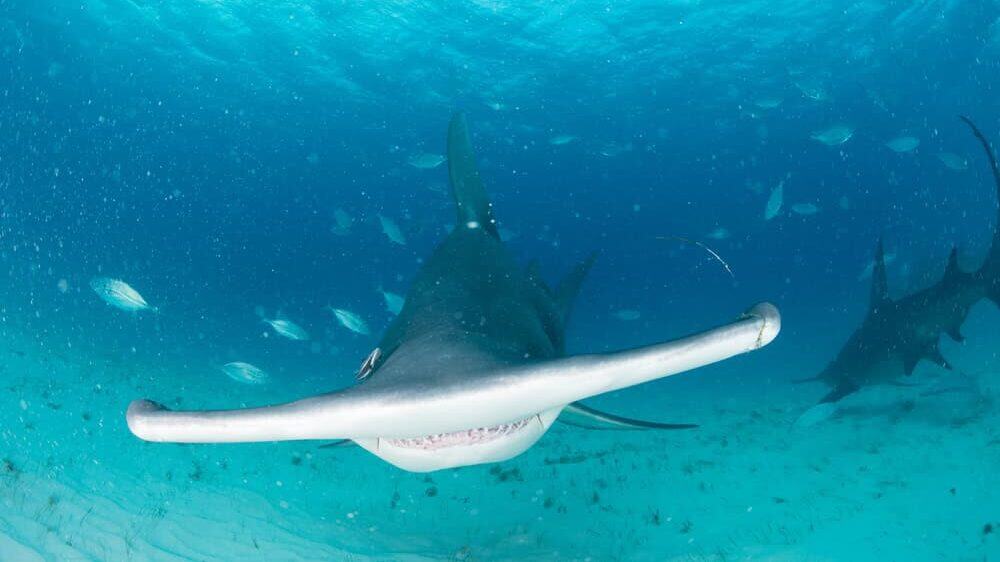
Beyond stingrays, many hammerhead species have developed specialized techniques for hunting cephalopods—particularly squid and octopuses. The smooth hammerhead (Sphyrna zygaena) shows a particular preference for these prey items. Their wide heads provide advantages when pursuing these intelligent invertebrates, allowing for better tracking of the rapid direction changes typical of squid evasion maneuvers. The enhanced electroreception is especially valuable when hunting octopuses, which are masters of camouflage but cannot mask their electrical signatures. Hammerheads can detect these electrical impulses even when the octopus is perfectly concealed visually. Stomach content analyses of smooth hammerheads have revealed that cephalopods can constitute up to 40% of their diet in certain regions. Interestingly, the hammer shape may also help in octopus extraction from rocky crevices, with the shark using the edges of its cephalofoil to pry or flush out hidden prey. This specialized hunting behavior demonstrates the versatility of the hammerhead’s unique anatomy and how it allows them to exploit food sources that might be less accessible to other shark species.
Temperature Regulation and Hunting Endurance
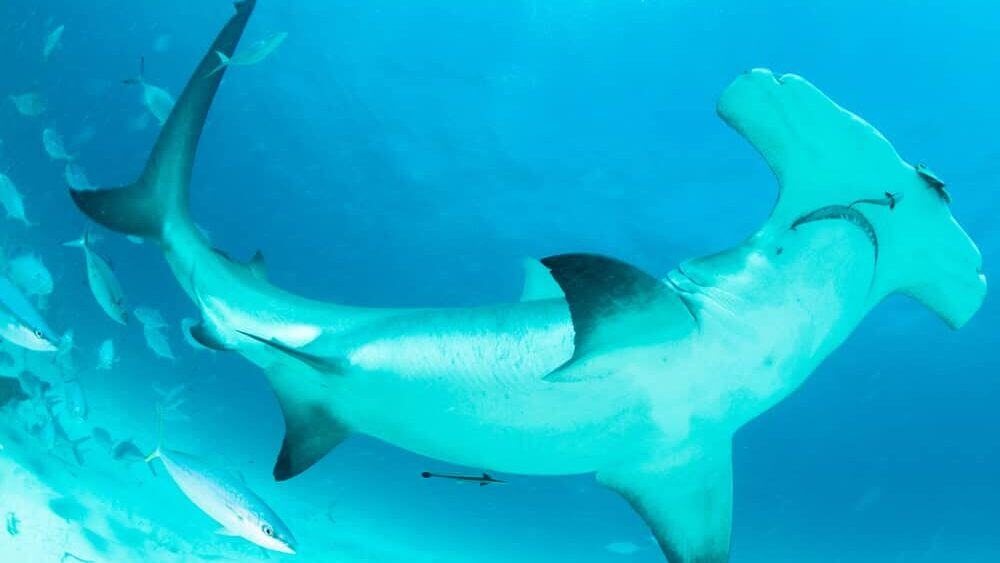
An often-overlooked aspect of the hammerhead’s cephalofoil is its potential role in temperature regulation, which indirectly enhances hunting capabilities. The expanded surface area of the head, filled with blood vessels, may function as a thermoregulatory organ. By increasing blood flow to the cephalofoil, hammerheads can potentially dissipate excess heat generated during active hunting, preventing overheating of their brain and sensory organs. This adaptation would be particularly valuable for species like the great hammerhead that engage in high-energy hunting behaviors and pursue prey over long distances. Some researchers have proposed that this thermoregulatory function might allow hammerheads to maintain optimal brain and sensory organ temperatures during extended hunting sessions, keeping their electroreceptors and other sensory systems functioning at peak efficiency. While this hypothesis requires further research, evidence of specialized blood vessel arrangements in the cephalofoil suggests that temperature regulation may indeed be another way that the hammerhead’s unique head shape contributes to its hunting prowess and endurance.
Evolutionary Development of the Hunting Head
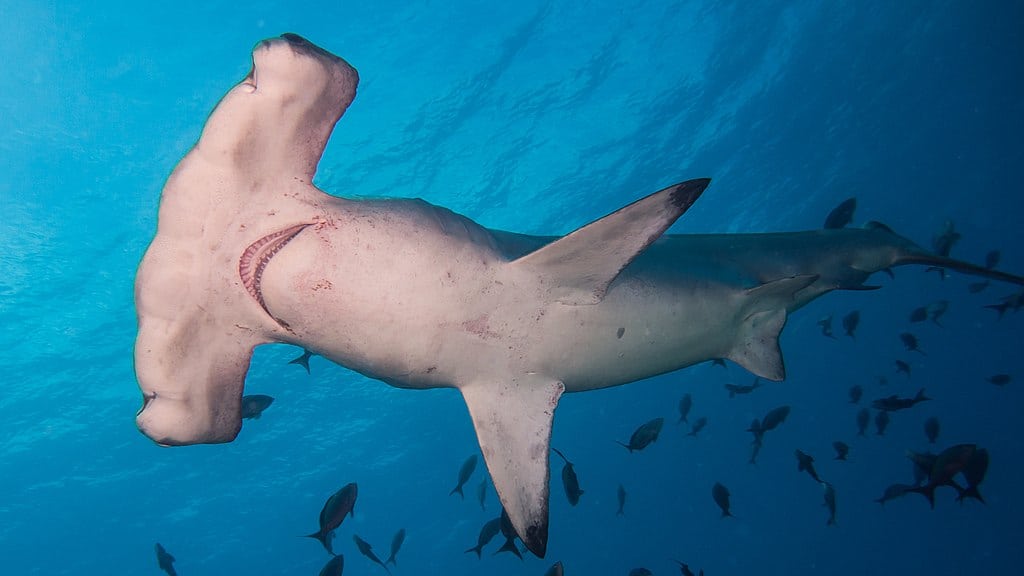
The hammerhead’s distinctive cephalofoil represents one of the most dramatic morphological specializations in the shark world, raising questions about its evolutionary development. Fossil evidence suggests that the hammerhead design evolved gradually, with ancestral forms showing progressively wider heads. Genetic studies indicate that the family Sphyrnidae diverged from other carcharhinid sharks approximately 20 million years ago, with the cephalofoil developing as a hunting adaptation. The evolution appears to have followed a pattern of increasing specialization, with the most extreme head shape (found in the great hammerhead) being a relatively recent development. Interestingly, embryonic hammerheads develop their characteristic head shape late in gestation, with the head gradually expanding laterally as the pup matures. This ontogenetic development mirrors the evolutionary history of the feature. The persistence of the cephalofoil across all hammerhead species, despite its potential hydrodynamic costs, speaks to the significant hunting advantages it must provide. Evolutionary biologists consider the hammerhead’s head to be a prime example of how strong selection pressure for enhanced hunting capabilities can drive the development of seemingly extreme anatomical features.
The hammerhead shark’s distinctive cephalofoil represents one of nature’s most remarkable adaptations for predatory success. Through millions of years of evolutionary refinement, these sharks have developed a hunting apparatus that combines enhanced sensory perception, improved hydrodynamics, and specialized prey capture techniques into a single distinctive feature. The advantages conferred by this unusual head shape—from superior electroreception and expanded vision to improved olfactory tracking and prey manipulation—have established hammerheads as some of the ocean’s most effective hunters. Their success across various marine environments, from shallow coastal waters to the open ocean, testifies to the versatility and effectiveness of this evolutionary innovation. As we continue to study these fascinating predators, we gain not only greater understanding of marine ecology but also inspiration for biomimetic technologies that might someday incorporate design principles from one of nature’s most perfectly adapted hunting specialists.
- America’s Most Endangered Mammals And How to Help - August 9, 2025
- The Coldest Town in America—And How People Survive There - August 9, 2025
- How Some Birds “Steal” Parenting Duties From Others - August 9, 2025

